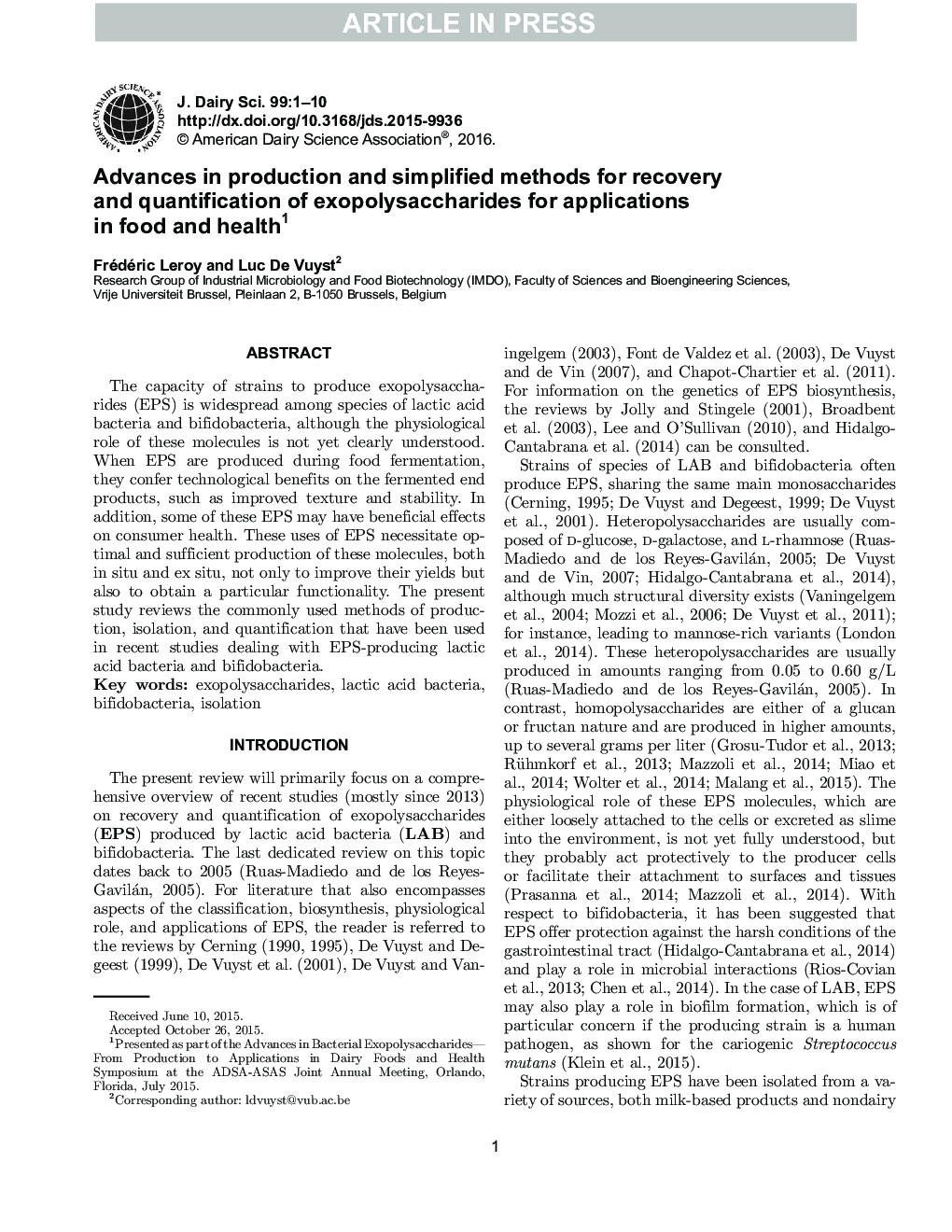| Article ID | Journal | Published Year | Pages | File Type |
|---|---|---|---|---|
| 10973162 | Journal of Dairy Science | 2016 | 10 Pages |
Abstract
The capacity of strains to produce exopolysaccharides (EPS) is widespread among species of lactic acid bacteria and bifidobacteria, although the physiological role of these molecules is not yet clearly understood. When EPS are produced during food fermentation, they confer technological benefits on the fermented end products, such as improved texture and stability. In addition, some of these EPS may have beneficial effects on consumer health. These uses of EPS necessitate optimal and sufficient production of these molecules, both in situ and ex situ, not only to improve their yields but also to obtain a particular functionality. The present study reviews the commonly used methods of production, isolation, and quantification that have been used in recent studies dealing with EPS-producing lactic acid bacteria and bifidobacteria.
Related Topics
Life Sciences
Agricultural and Biological Sciences
Animal Science and Zoology
Authors
Frédéric Leroy, Luc De Vuyst,
